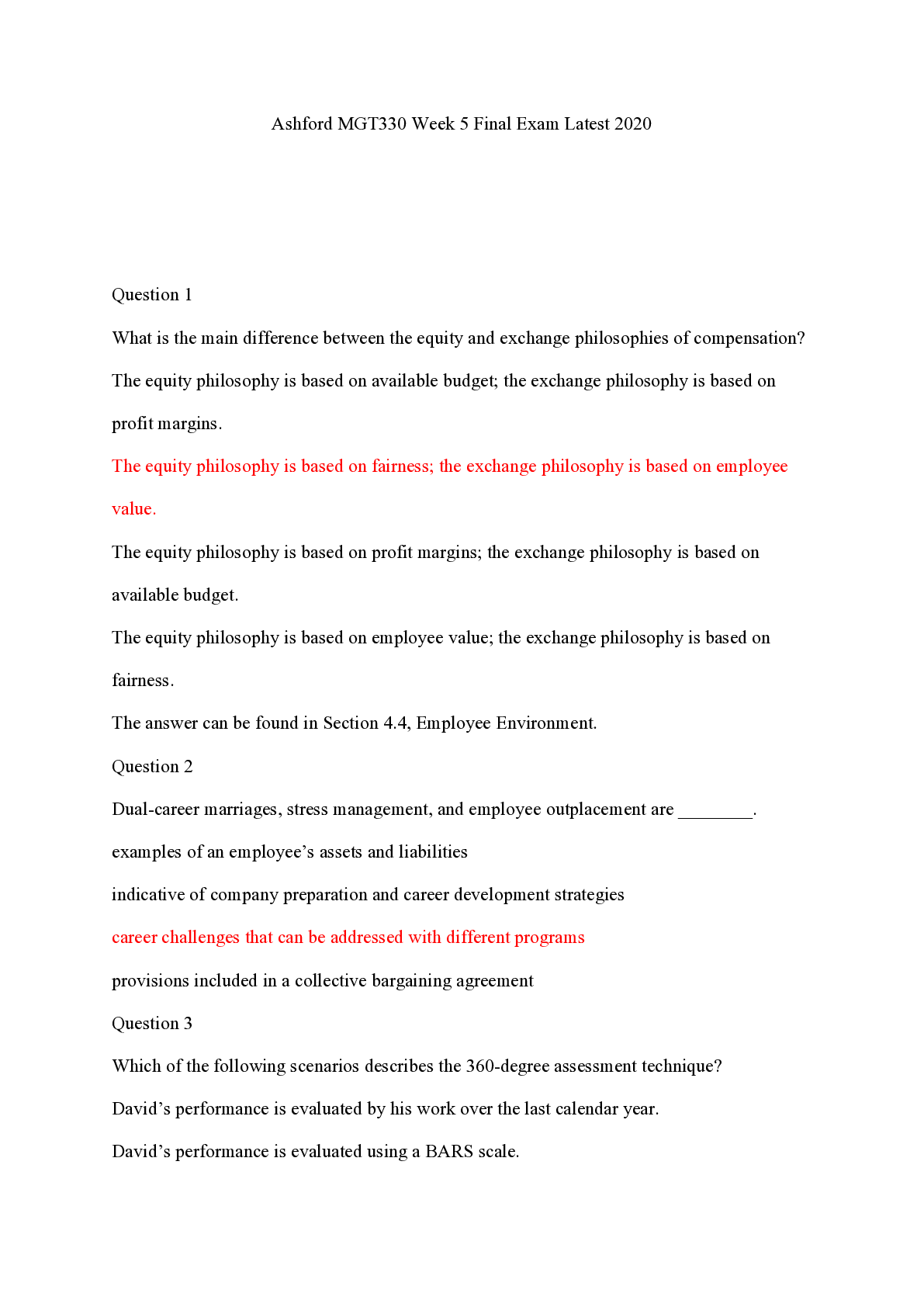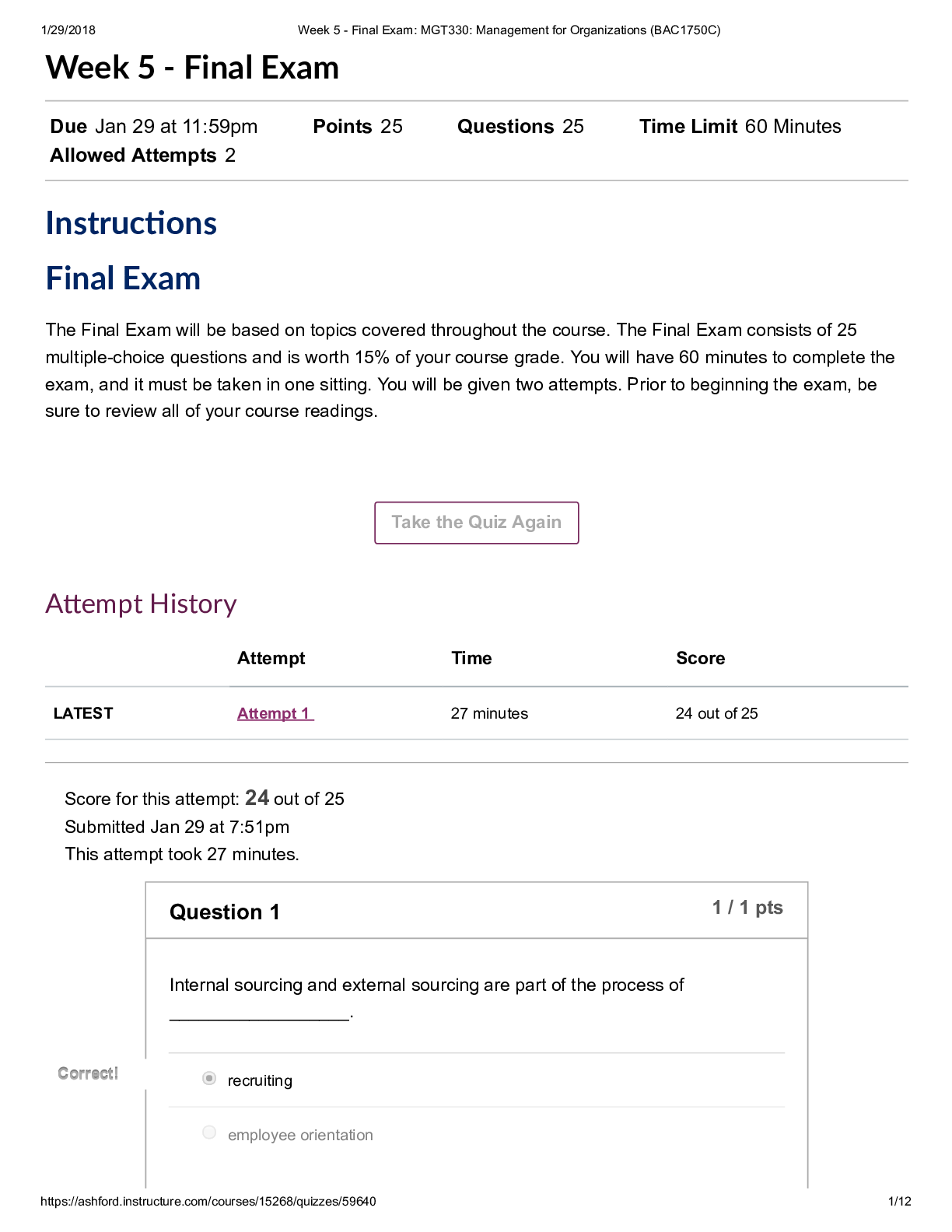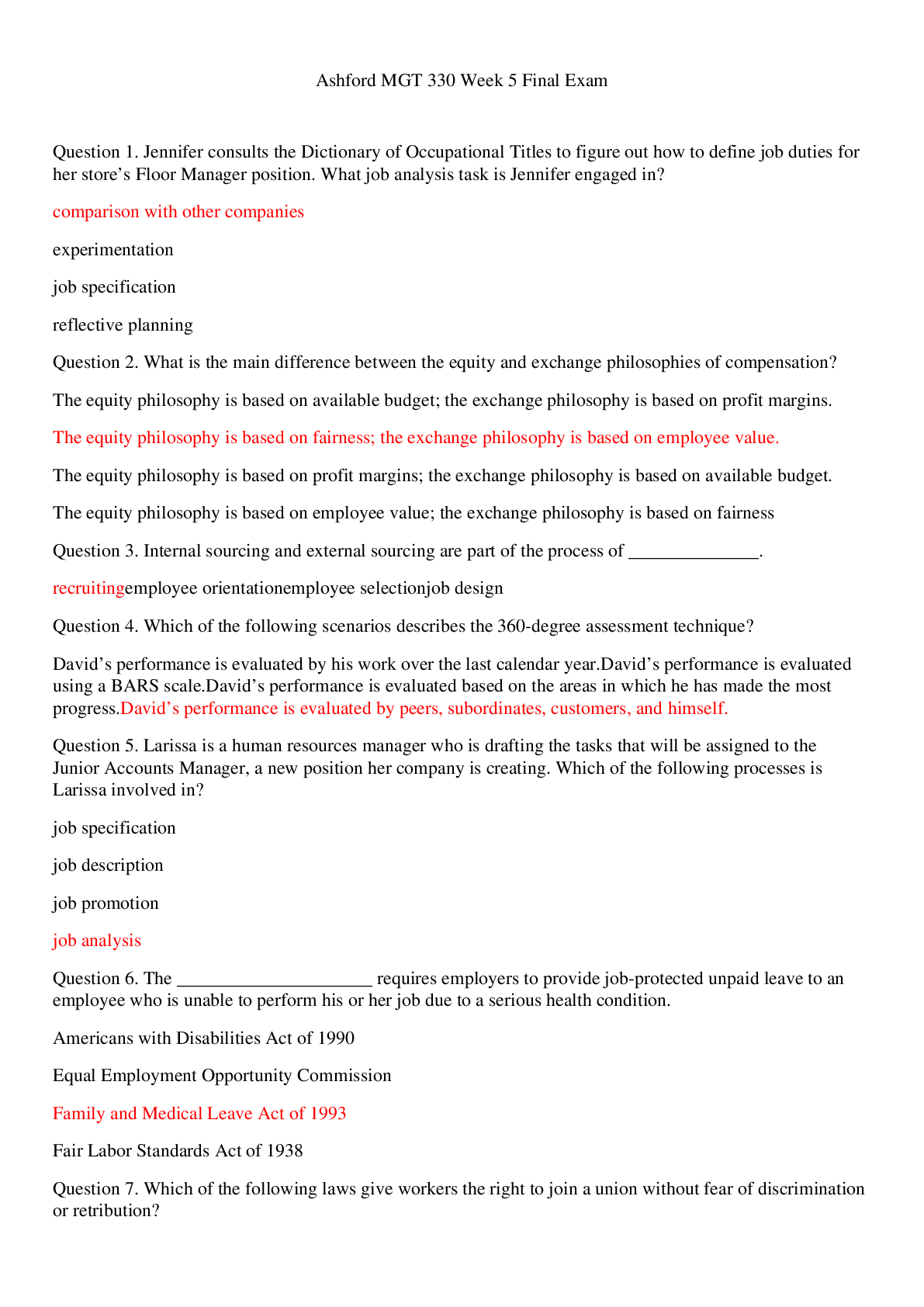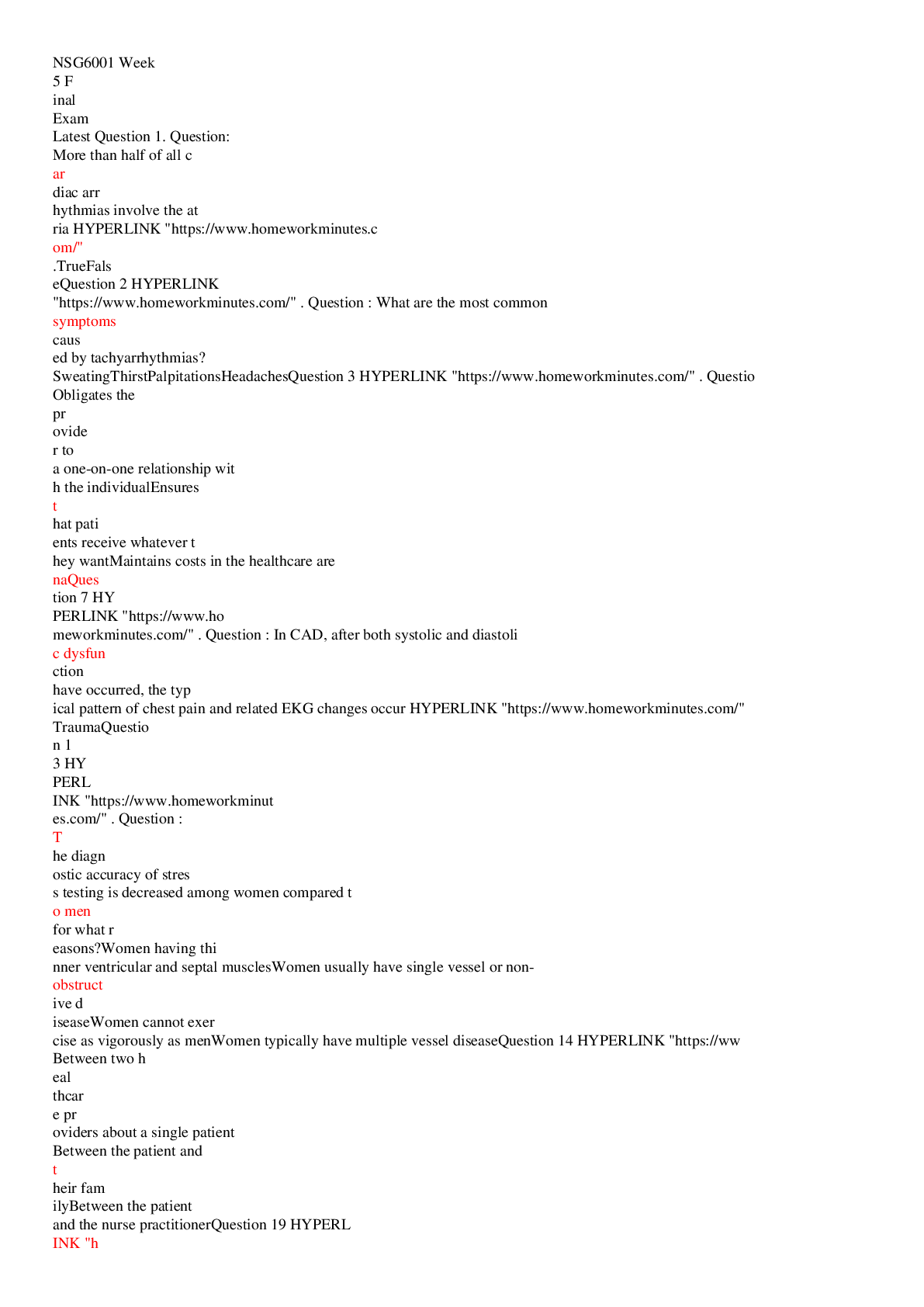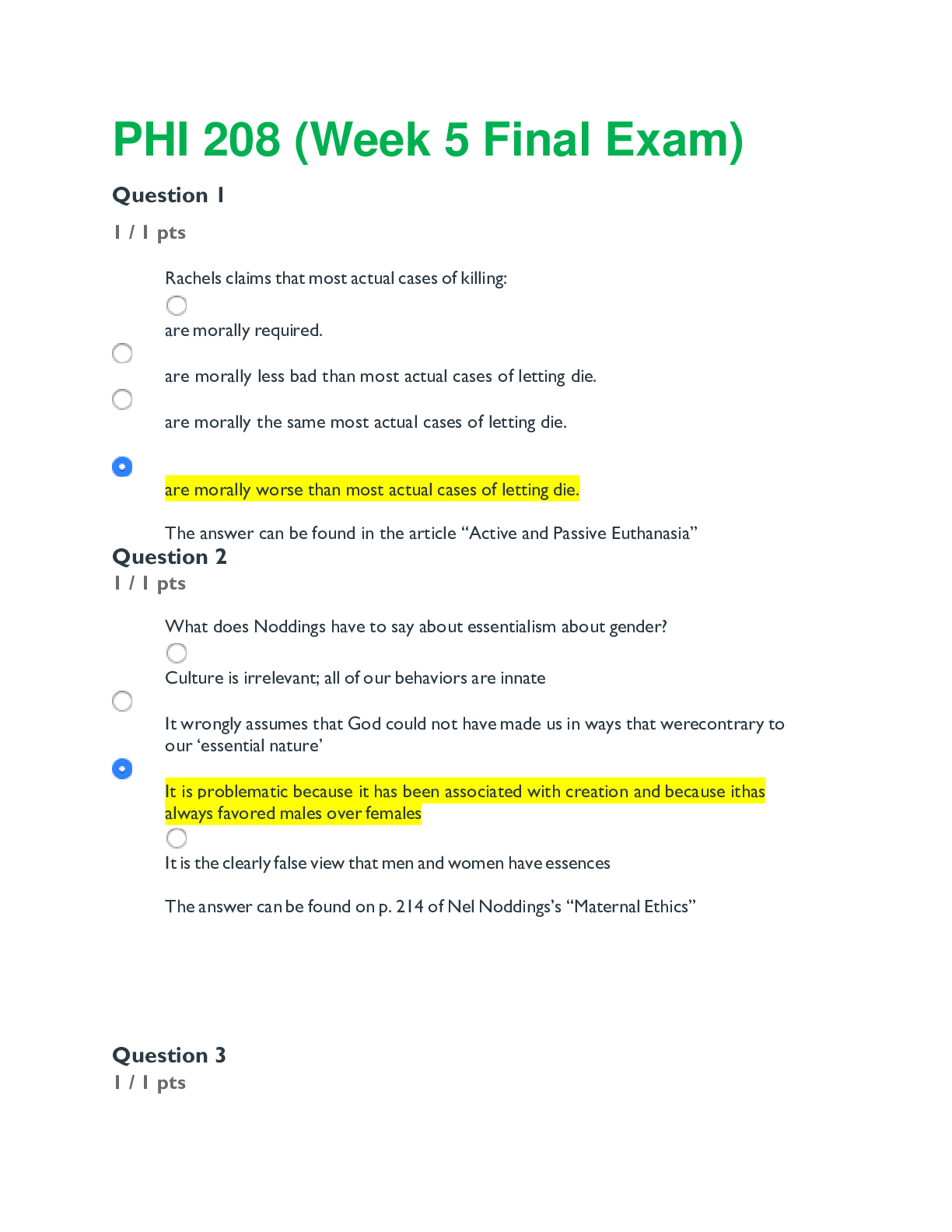NSG 6001 Week 5 Final Exam 2018
Document Content and Description Below
Question 1 More than half of all cardiac arrhythmias involve the atria. True False Question 2. What are the most common symptoms caused by tachyarrhythmias? Sweating Thirst P... alpitations Headaches Question 3. For women with known CAD and diabetes, which is most appropriate to assess CAD risk? ETT Coronary bypass surgery Coronary catheterization ETT with imaging Question 4. Of the following, which is the best answer when asked for an advantage of echocardiogram exercise testing over thallium stress testing? Does not depend on operator experience Costs are the same Results are available more quickly Doesn’t matter because there are no advantages Question 5. Your patient has uncomplicated pyelonephritis. In deciding your recommended treatment, you consider the most common pathogenic reason for this diagnosis. What pathogen accounts for the majority of pyelonephritis? E. Coli Gardnerella Vaginalis Mycoplasma Hominis Chlamydia Question 6. What purpose does the principle of fidelity serve in the provider/patient relationship? Ensures that providers honor their commitments to the patient Obligates the provider to a one-on-one relationship with the individual Ensures that patients receive whatever they want Maintains costs in the healthcare arena Question 7. In CAD, after both systolic and diastolic dysfunction have occurred, the typical pattern of chest pain and related EKG changes occur. During an EKG, you should expect to see ST-segment and T-wave changes that are central to demonstration of ischemia occurring relatively late in the ischemic cascade. Is this true or false? True False Question 8. The leads on the ECG showing ischemic changes during or immediately after an ETT can correlate roughly to the culprit artery or arteries with significant CAD. Is this true or false? True False Question 9. Skin cancer is the most common malignant neoplasm in males in the US. What is the second leading cause of cancer deaths in men greater than 50 years of age? Prostate cancer Lung cancer Lymphoma Lupus Question 10. What ECG changes can reduce the specificity of the ETT? Exercise induced bundle branch blocks Paced rhythm and resting bundle branch block Paced rhythm and exercise induced bundle branch blocks Low voltage up sloping of the ST-segment Question 11. You have confirmed that your patient does indeed have an abdominal aortic aneurysm. In teaching your patient about symptoms to report immediately to the vascular surgeon, you instruct the patient to report which of the following? Newly diagnosed diabetes Back pain or flank pain Visual disturbances Headaches Question 12. What is one of the common causes of a Saccular Abdominal Aneurysm? Poor kidney functioning Age Drugs: illicit and prescribed Trauma Question 13. The diagnostic accuracy of stress testing is decreased among women compared to men for what reasons? Women having thinner ventricular and septal muscles Women usually have single vessel or non-obstructive disease Women cannot exercise as vigorously as men Women typically have multiple vessel disease Question 14. Population disease management is a term used to describe: High specificity disease states Low specificity diseases states Low prevalence specific diseases High prevalence specific diseases Question 15. You receive a report back on the suspected abdominal aortic aneurysm for your patient. It confirms your suspicion of AAA. The report describes the aneurysm as a symmetric weakness of the entire circumference of the aorta. You know that this form of aneurysm is referred to as what kind of aneurysm? Thoracic aneurysm Budging sac aneurysm Saccular aneurysm Fusiform aneurysm Question 16. Your practice partner just ordered an exercise echocardiography 2DE for a patient with suspected cardiovascular risk. This patient has known resting wall motion abnormalities.Why would this not be the best test to assess this patient’s cardiac risk? Sensitivity is increased Sensitivity is decreased Specificity is increased Specificity is decreased Question 17. Your 60-year old male patient arrives for his appointment. He complains of general malaise and fever over the past several days with low back pain. He also states that he is getting up at night more often to urinate and never feels his bladder is completely empty.What differential diagnosis should you consider in this patient? Acute viral prostatitis Stomach virus Acute bacterial prostatitis BPH only Question 18. We all know that collaboration is integral to becoming a successful nurse practitioner. Among collaborations, however, only one can be considered as the most important. While each example below is important, which is the most important collaboration? The one that occurs: Between the nurse practitioner and their physician mentor Between two healthcare providers about a single patient Between the patient and their family Between the patient and the nurse practitioner Question 19. The sensitivity of a routine ETT is effort dependent. What physiological changes occur during effort in the routine ETT? Rapid heart rates and coronary artery narrowing Decrease in coronary blood flow Decreased heart rate and increased systolic blood pressure Increased coronary flow and increased systolic blood pressure Question 20. A 47-year old female with general complaints of fatigue and shortness of breath shows up in your clinic as a referral from another nurse practitioner. Several blood tests and chest x-rays have been completed without any diagnosis or outstanding abnormalities.You decide to order an ETT despite the fact that the recent ECG does not show any abnormalities. From the answers below, which would be the best answer to support your decision? You are out of other options CAD in women is under diagnosed To please the patient Women present with the same pattern of CAD as do males Question 21. Your patient underwent an exercise stress test for CAD. There is significant elevation of the ST-segment.What do you need to know about these changes to manage your patient’s care? : This patient needs to see someone more experienced in treatment of CAD These changes are predictive of myocardial infarction These changes have minimal predictive value for CAD These changes predict dire outcomes Question 22. When there is a consequential loss of structural integrity of the abdominal aorta, the resulting issue is what condition? Bloated stomach Kidney failure Bleeding ulcers Abdominal aortic aneurysm Question 23. You see a 60-year old African American male in your clinic with a recent diagnosis of hypertension. He asks you what he should restrict in his diet, and is particularly interested in limiting his sodium intake. What amount of sodium intake would you recommend on a daily basis for this patient? 1.5 g/day No added table salt 3.0 g/day 2.3 g/day Question 24. Why would inability to exercise reduce the specificity of the routine ETT? Produces QRS changes that cannot be interpreted Produces persistent ST-segmental changes and T-wave abnormalities Causes ST-segment changes and P-wave abnormalities Will not produce any changes in ECG Question 25. By standard criteria, how is a positive stress test defined? Development of a horizontal or down sloping ST-segment depression of 1mm Down sloping of the ST-segment at the J point of the QRS Development of a horizontal or down sloping ST-segment depression of 10mm Upward sloping ST-segment measured at the J point of the QRS Question 26. What are the two types of bradycardia recognized by the American Heart Association? Relative and absolute Absolute and pending Refractory and non-refractory Relative and dynamic Question 27. You see a 75-year old female in your clinic today complaining of urinary incontinence. She is otherwise healthy based upon her last visit. She states that her mother told her this would happen someday because it happens to every woman at some age. What would you tell this patient? This happens to all women as they age No need to worry. This is normal. Your mother was correct. This is not an expected condition related to aging. This happens to men as well and most women before your age. Question 28. What do you know regarding ischemia that is confined to only the posterior and or lateral segments of the left ventricle? ETT cannot be used for detection Difficult to detect by ETT Requires both for detection of changes by ETT Easier to detect by ETT Question 29. What three conditions definitely alter the results of echocardiography in determining CAD? Obesity, rapid heart rate and lung disease Diabetes, kidney disease and tooth decay Obesity, slow heart rates and hypertension Previous MI, hypotension and diabetes Question 30. Specifically, when is an ETT considered to be negative? Patient has ST-segmental changes with down sloping of greater than 1 mm at 50% of age-predicted maximum heart rate Patient exercises to 85% of age predicted maximum heart rate without evidence of induced ischemia Patient exercises to 20% maximum age-predicted heart rate without induced ischemia Patient exercises until tired without evidence of induced ischemia Question 31. All patients, even is asymptomatic, require risk stratification according to the Farmingham risk score. At present, ACC/AHA guidelines, however, do not normally support stress tests for asymptomatic patients without addiitonal justification. From the list below, what could be used to justify a ETT in an asymptomatic patient? A smoker of 3 weeks A member of congress Sedentary and wishes to begin aggressive exercise Developmentally challenged Question 32. BPH is not a risk factor for Prostate cancer. Is this statement true or false? True Question 33. Spread of genital herpes only occurs during the time period with active lesions. Is this statement true or false? True False(not confirm) Question 34. Abdominal aortic aneurysms are often asymptomatic. What percent of AAA’s are discovered in asymptomatic patients? 40% 20% 10% 75% Question 35. Improvements in the delivery and management of healthcare are necessary if we are to improve the overall health of this nation’s population. Which of the following are identified in your readings as strategic in the movement to improve the healthcare system? President and Congress Population management and healthcare practice Socialized medicine and governmental controls Monetary savings and limited disruption in healthcare delivery Question 36. What are the two main types of heart failure? Systolic and diastolic Hopeless and severe Left sided and main End diastolic and pressure related Question 37. The majority of all strokes are non-ischemic. Is this statement true or false? True False Question 38. When a murmur is first heard, it is important to determine if it is due to a pathological condition or benign. For an experienced practitioner, it is always easy to determine the cause of a murmur merely by listening to the sound. Is this statement true or false? True False Question 39. Maintenance of an Isometric ST-segment during exercise is the response of? A normal heart Hypo profusion An abnormal heart CAD Question 40. The goal of self-management is to specifically do what? Engage patients in their own care Engage insurance providers in patient care Engage providers in patient care Engage government in greater involvement in patient care Question 41. Your 56-year old patient presents with bradycardia with a rate of 55 and first degree AV block. The patient is hemodynamically stable and is not experiencing any syncope or chest pain. History includes previous myocardial infarction. Home medications include beta blockers, daily aspirin. Lab work is non-significant for electrolyte imbalance. You decided to treat this patient for the arrhythmia to prevent future destabilization. From the choices below, which might be the appropriate first measure to consider? Add digitalis to control the heart rate Consult cardiologist immediately for guidance Discontinue Beta Blocker and replace with another therapy if necessary Atropine injections Question 42. Your patient is morbidly obese and cannot sit on a bicycle or walk a treadmill. She also has marked and severe emphysema. You need to make an assessment of the risk of significant CAD and your patient’s family says that their relative had their diagnosis based on an ultrasound echocardiography. What facts would influence your decision regarding the family request for echo assessment? Sensitivity would be increased because of lung disease Specificity would be increased because of obesity Sensitivity would be reduced because of obesity and lung disease Specificity would be reduced because of obesity and lung disease Question 43. You are in the clinic with your mentor observing the Echocardiogram exercise test of a 45-year old male that has been experiencing slight chest pressure almost daily during exercise.While observing your patient, your mentor points out that the left ventricle wall is thinning and there is some hyperkinesias of the ventricular wall. From your time in the clinic, you know that this test will be considered to be what type of result? Negative Impossible Positive Non-readable Question 44. Your patient is newly diagnosed with persistent Atria Fibrillation. You consider electrocardioversion. Before undergoing this procedure you should order the following examination to assess thrombus risk. X-Ray of chest Tranesophageal echocardiography Ultrasound of chest CT Scan Question 45. Tachyarrhythmias cause a drop in commonly blood pressure, cardiac output, syncope, shortness of breath, and chest pain. What phenomenon most often occurs during these arrhythmias to cause these symptoms? Shortened diastole Lengthened diastole Lengthened systole Shortened systole Question 46. At what age is atria fibrillation most common? In childhood 60 years or older 30 years 45 years Question 47. Automaticity is a property common to all cardiac cells. Is this statement true or false? True False Question 48. Your patient has a maximum age-predicted heart rate of 180. During the exercise he reaches a heart rate of 140 and then states he can no longer exercise. You see evidence of ischemic changes on the ECG. This would be predictive of what condition? Stroke Significant CAD Impending death Low risk of CAD Question 49. You tell a patient that he has a murmur. He says he has been told this before, but wonders what causes the unique sounds of a murmur. Which of the following would be your best option? Turbulent flow of blood High pressures caused from HTN There is no reason, it just happens Almost always from a sclerotic valve Question 50. What is the treatment of choice for uncomplicated community-acquired cystitis? TMP-SMZ Any antibiotic will treat this diagnosis Amoxicillin Penicillin Question 51. Any patient presenting with symptomatic bradycardia should be referred to a cardiologist for management. Is this statement true or false? True False Question 52. Encouragement of patients to take effective actions in their own healthcare refers to the concept of: Self-management support Interprofessional support Physician or provider-driven care Family care givers Question 53. You are considering adding an adjunctive form of testing to detect wall motion abnormalities during the ETT.You select Echocardiography as the added testing. You choose this test because you know that echocardiography does what when added to a standard ETT? Enhances sensitivity and specificity of CAD detection Enhances sensitivity while reducing specificity of CAD detection Enhances specificity while not changing sensitivity of detection for CAD You like pretty pictures of wall motion Question 54. Medicaid is mandated to be provided by each state through federal codes. Each state must offer Medicaid exactly as the federal government prescribes. True or false? True False Question 55. What sexually transmitted disease is most widespread in the USA today? Chlamydia Gonorrhea Syphilis HIV/AIDS Question 56. Your preceptor decides to add Doppler Flow studies to the echocardiogram exercise test for a patient with a recent history of a holistic murmur best auscultated at the left steral boarder. The patient has no history of cardiac surgeries. He asks you what might be the main advantages of adding Doppler Flow for this particular patient. You know from your readings that there are several reasons to add Doppler Flow and below are listed more than one correct reason. Your best response for this specific case, however, would be that Doppler Flow studies would be of what additive value during the echocardiogram study? Detect and evaluate blood shunting from a septal defect No advantage is seen for this patient Gives better screen shots of wall abnormalities Provides assessment of prosthetic valve function Question 57. Sexual partners of a patient with a diagnosed STI should always be examined and treated. Is this statement true or false? True False Question 58. Your patient presents with tachycardia. The QRS is measured at 0.10 seconds. Which of the following tachycardias would be an appropriate conclusion based on this information alone? Ventricular tachycardias Premature junctional contractions Atria fibrillation Ventricular fibrillation Question 59. A 65-year old white male arrives in your clinic with general complaints of slight abdominal discomfort. He has a known history of smoking two packs per day for 40 years and hypertension. He also has COPD and has been treated numerous times with oral steroids. You consider several optional diagnoses. Of the ones listed below, which should be included as a potential top suspect in your choice of diagnosis? Chronic bowel obstruction Meglacolon Appendicitis Abdominal aortic aneurysm Question 60. What are the most common mechanisms to produce cardiac arrhythmias? Decreased automaticity, triggered activity or reentry Reentry, electrical dysfunction or activity Stress, hard work or swimming Enhanced automaticity, triggered activity or reentry [Show More]
Last updated: 11 months ago
Preview 1 out of 10 pages

Reviews( 0 )
Document information
Connected school, study & course
About the document
Uploaded On
Nov 17, 2020
Number of pages
10
Written in
Additional information
This document has been written for:
Uploaded
Nov 17, 2020
Downloads
0
Views
118


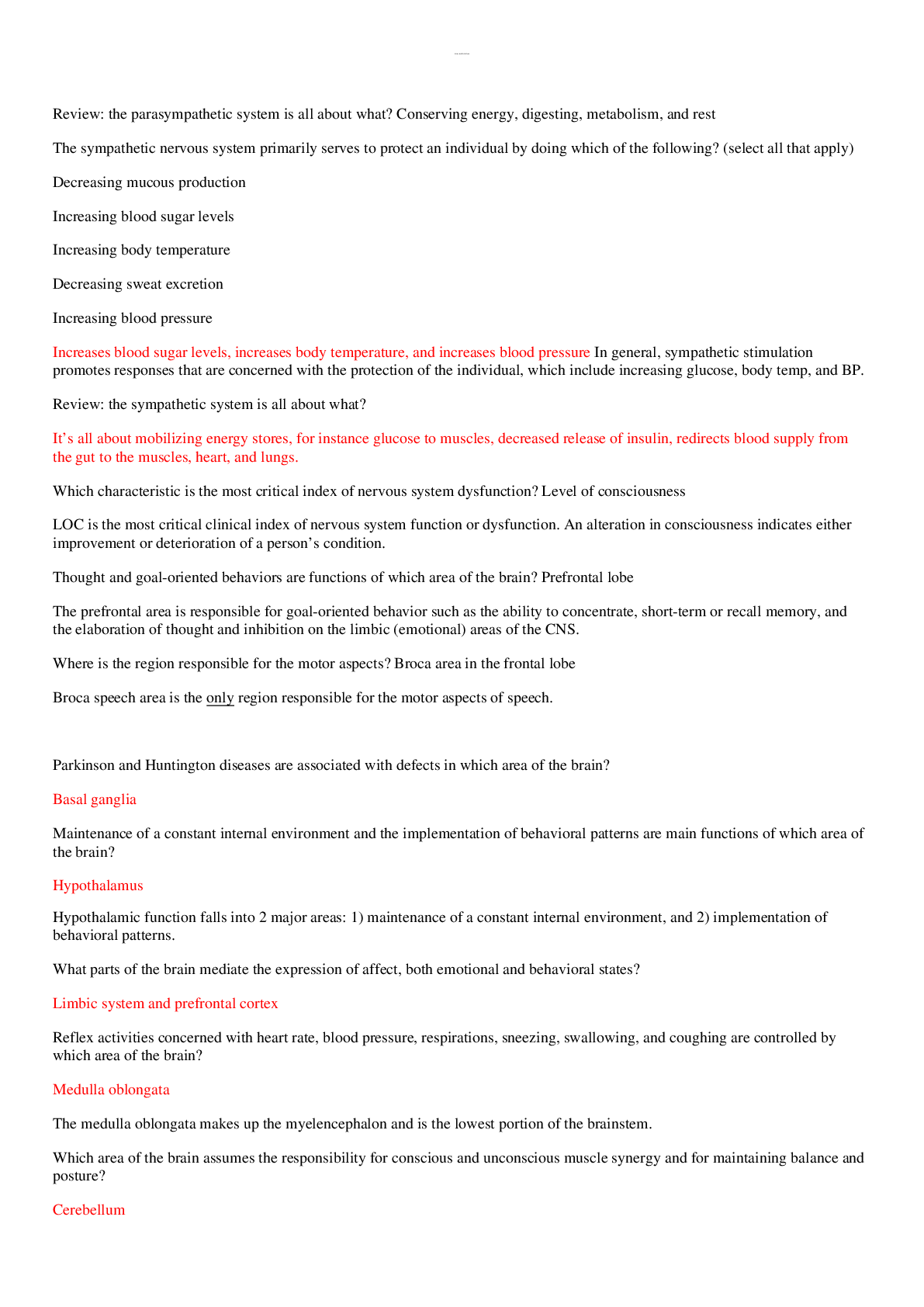

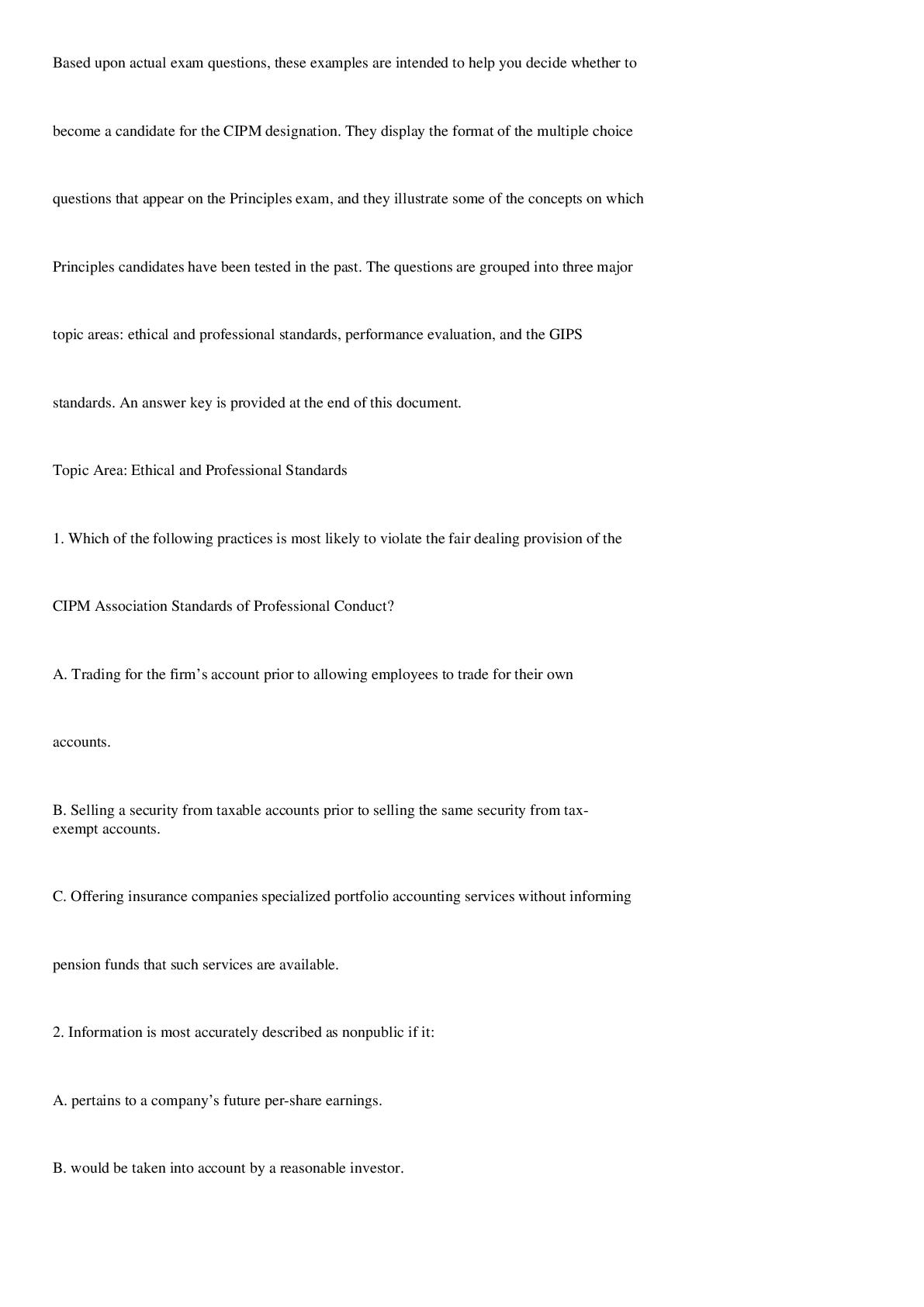
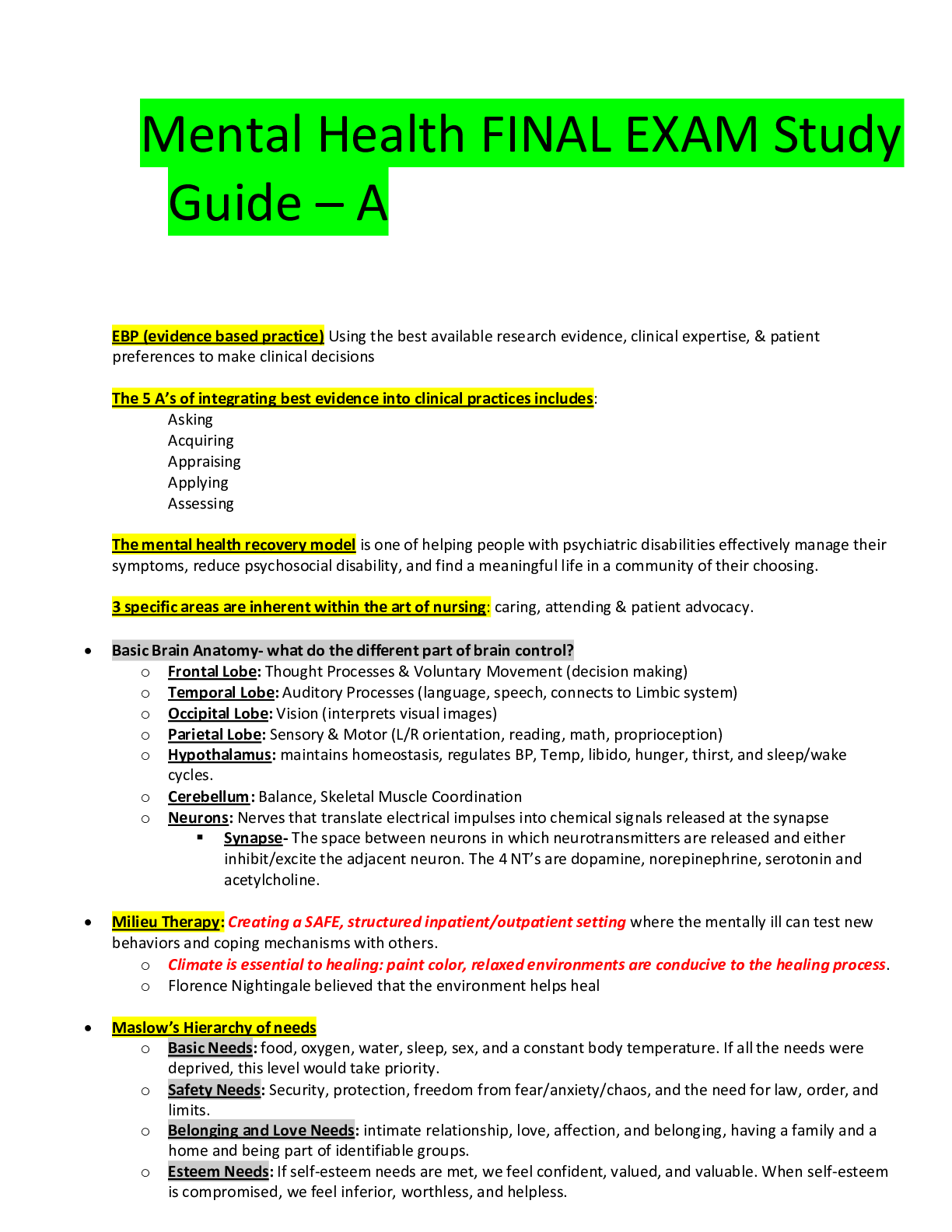

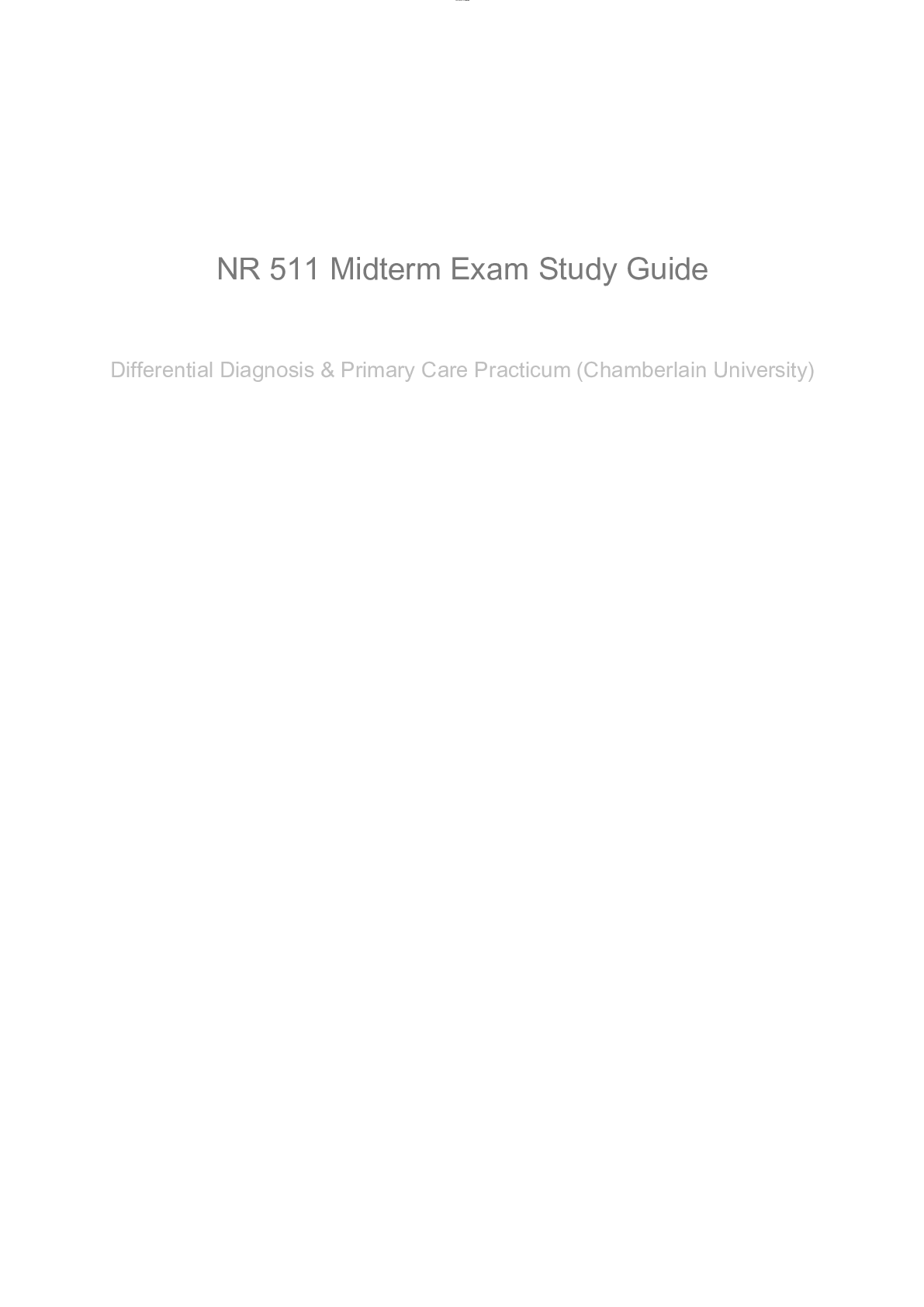


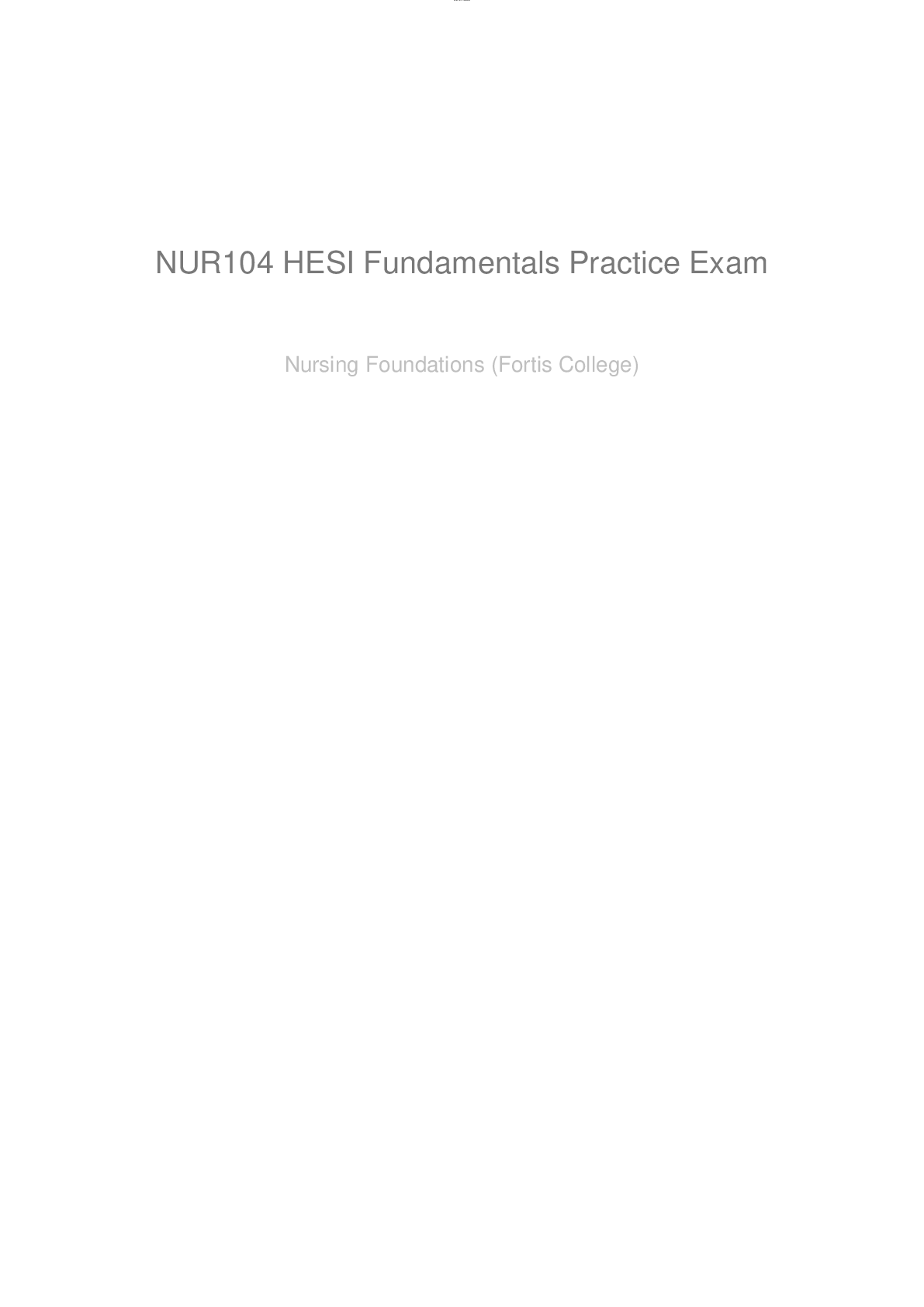
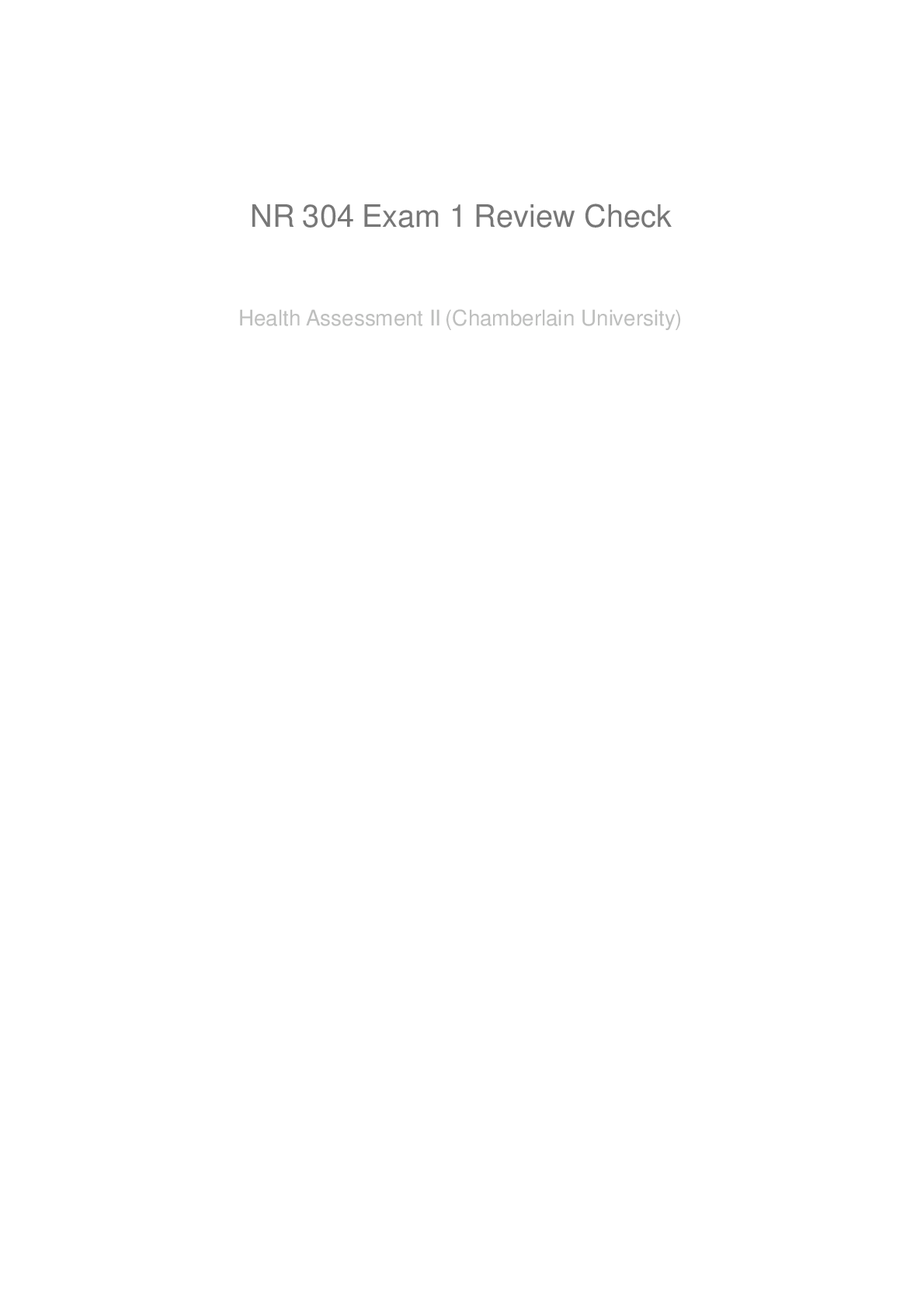

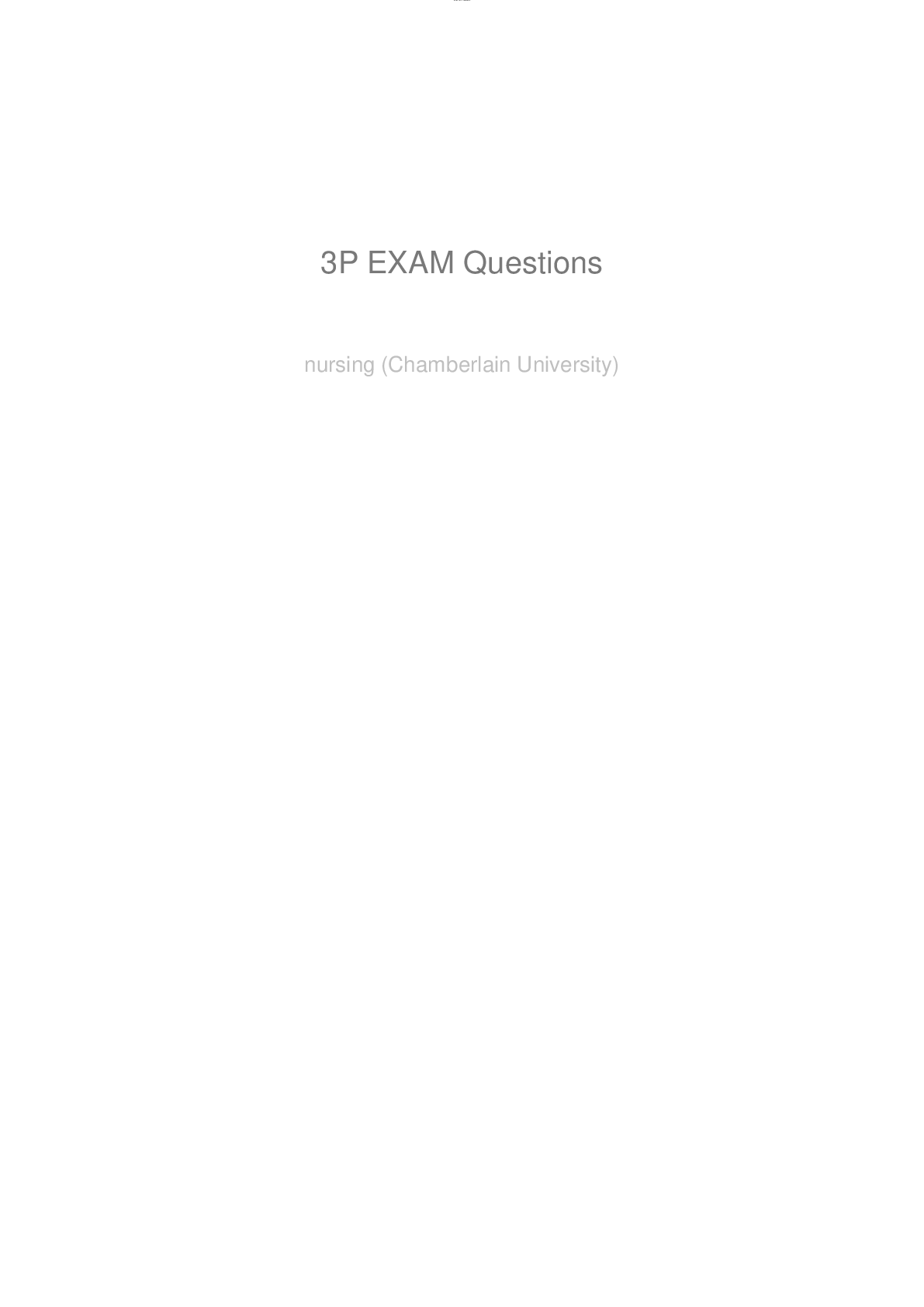
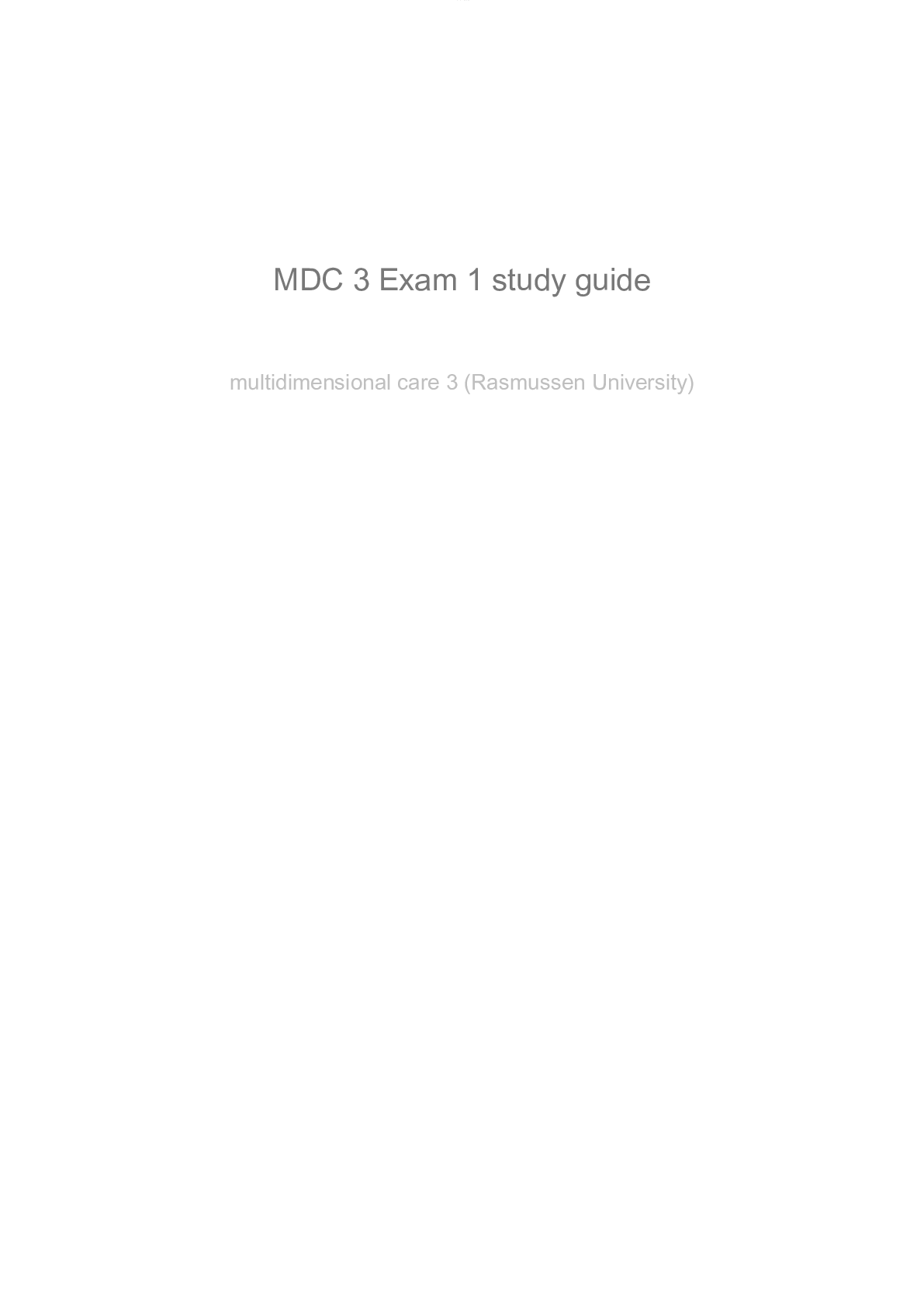


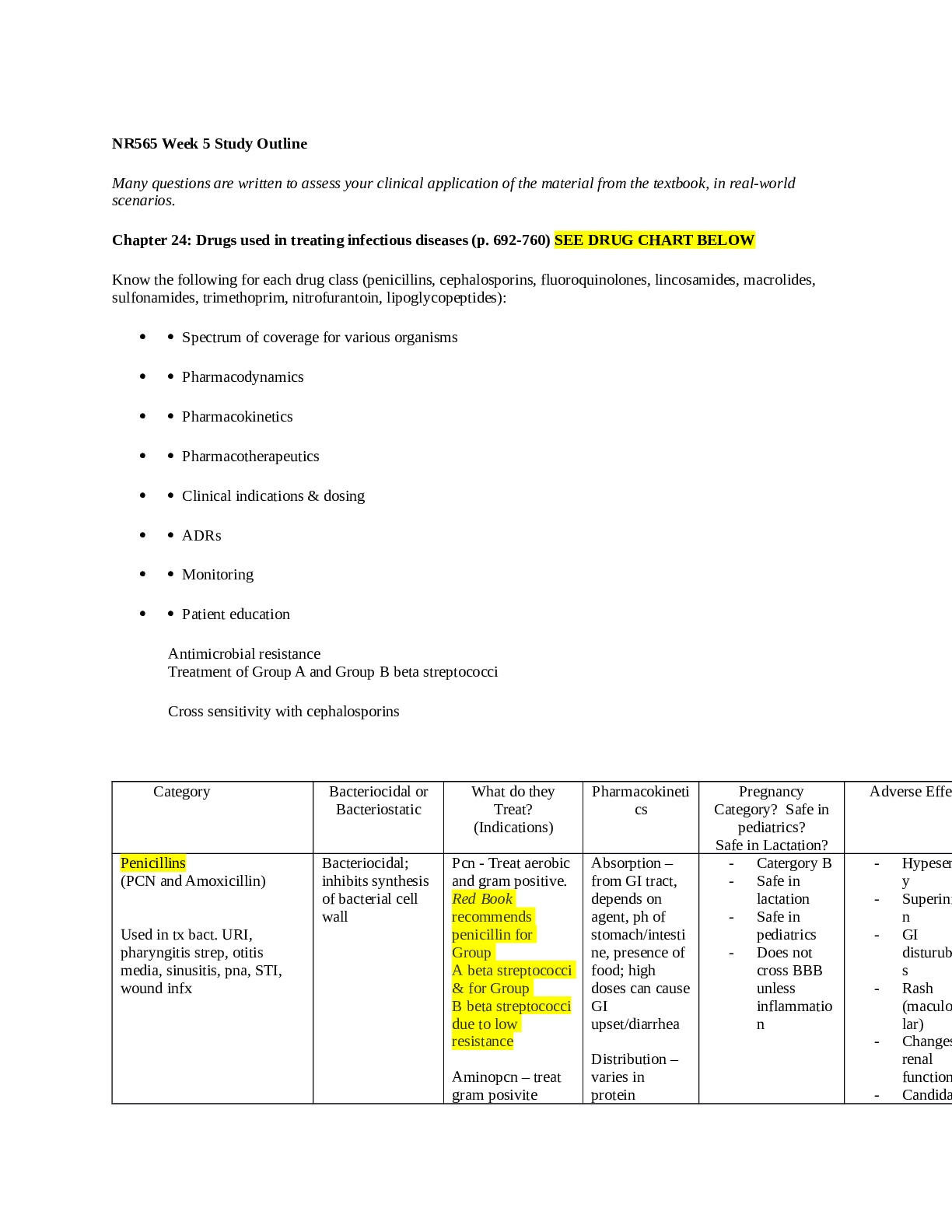

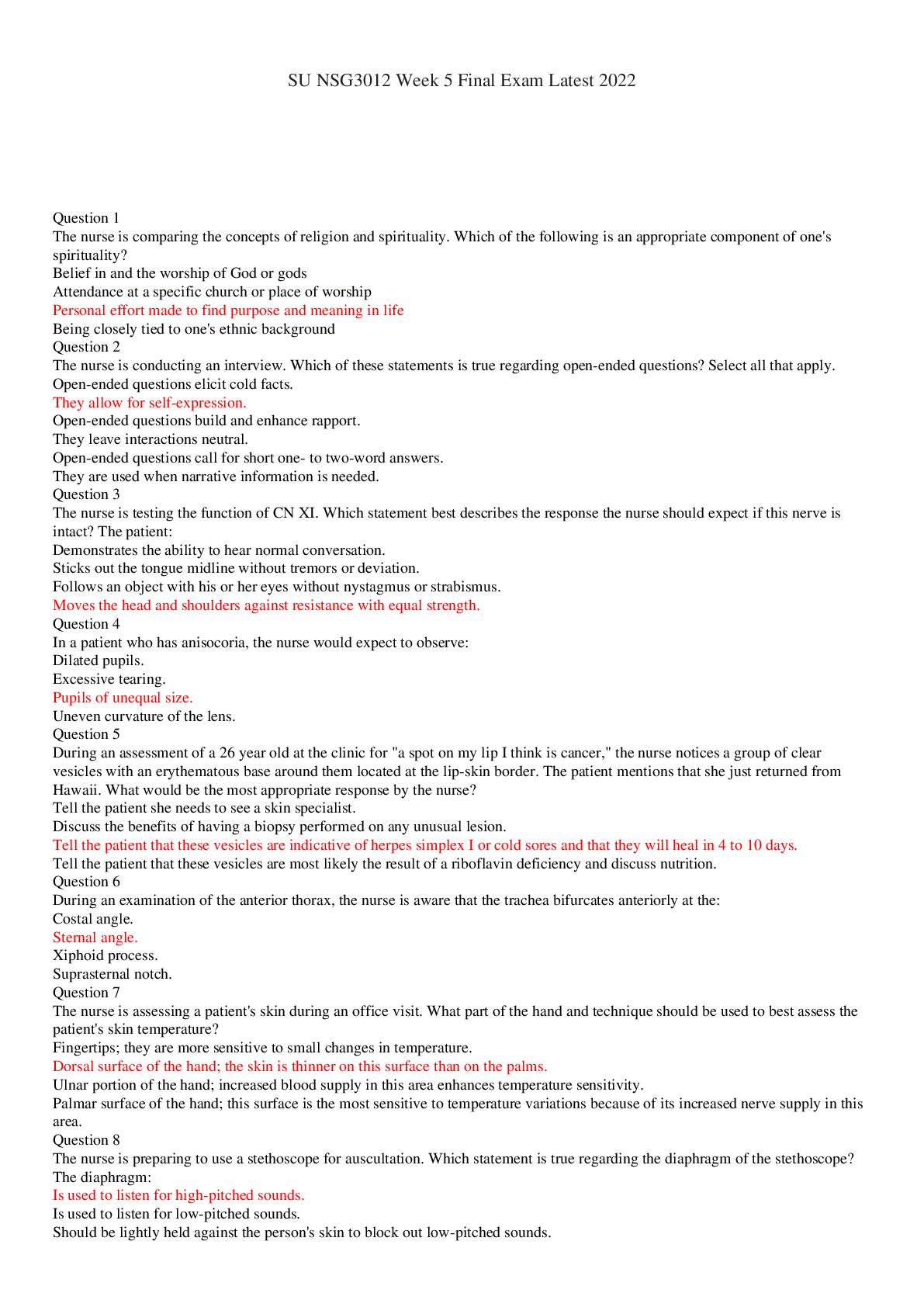

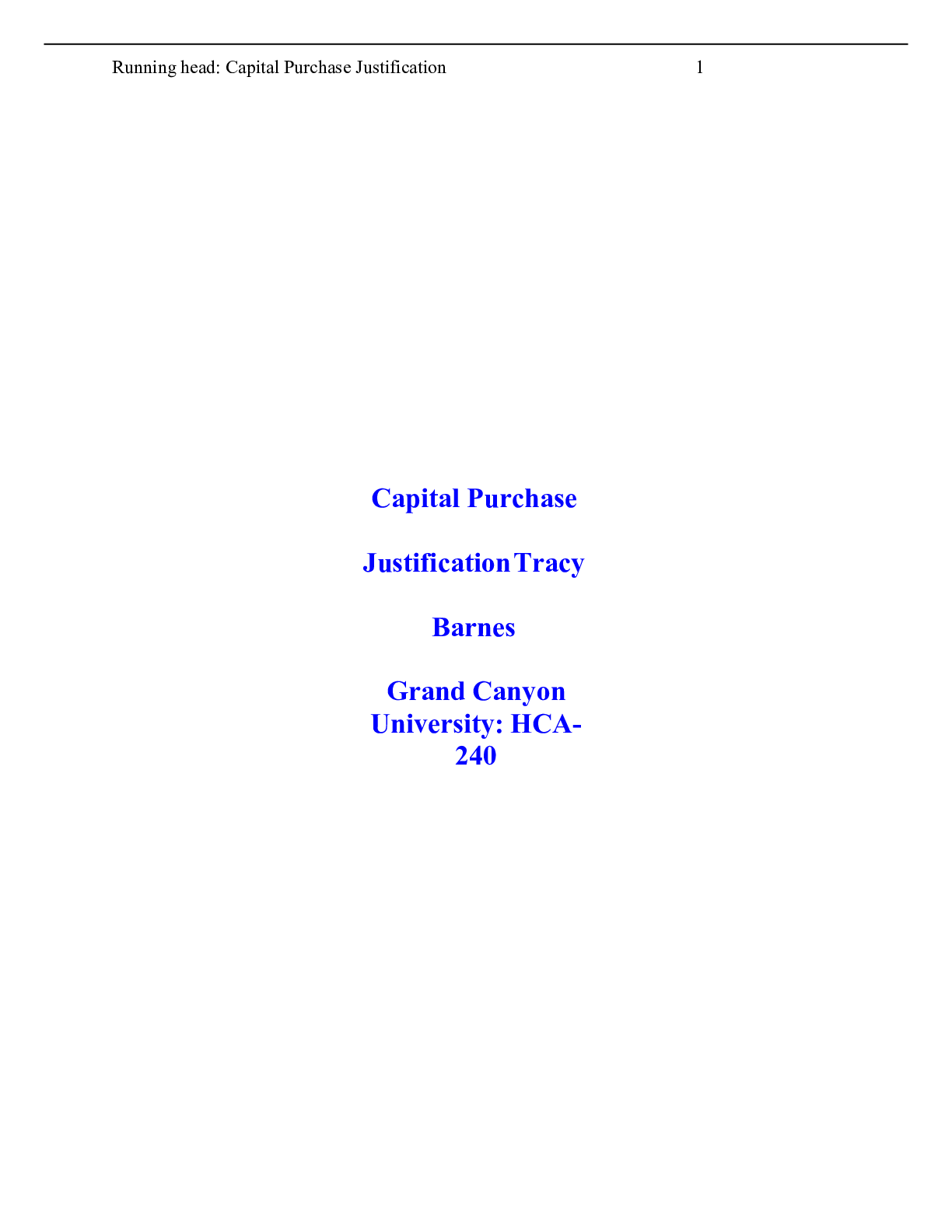

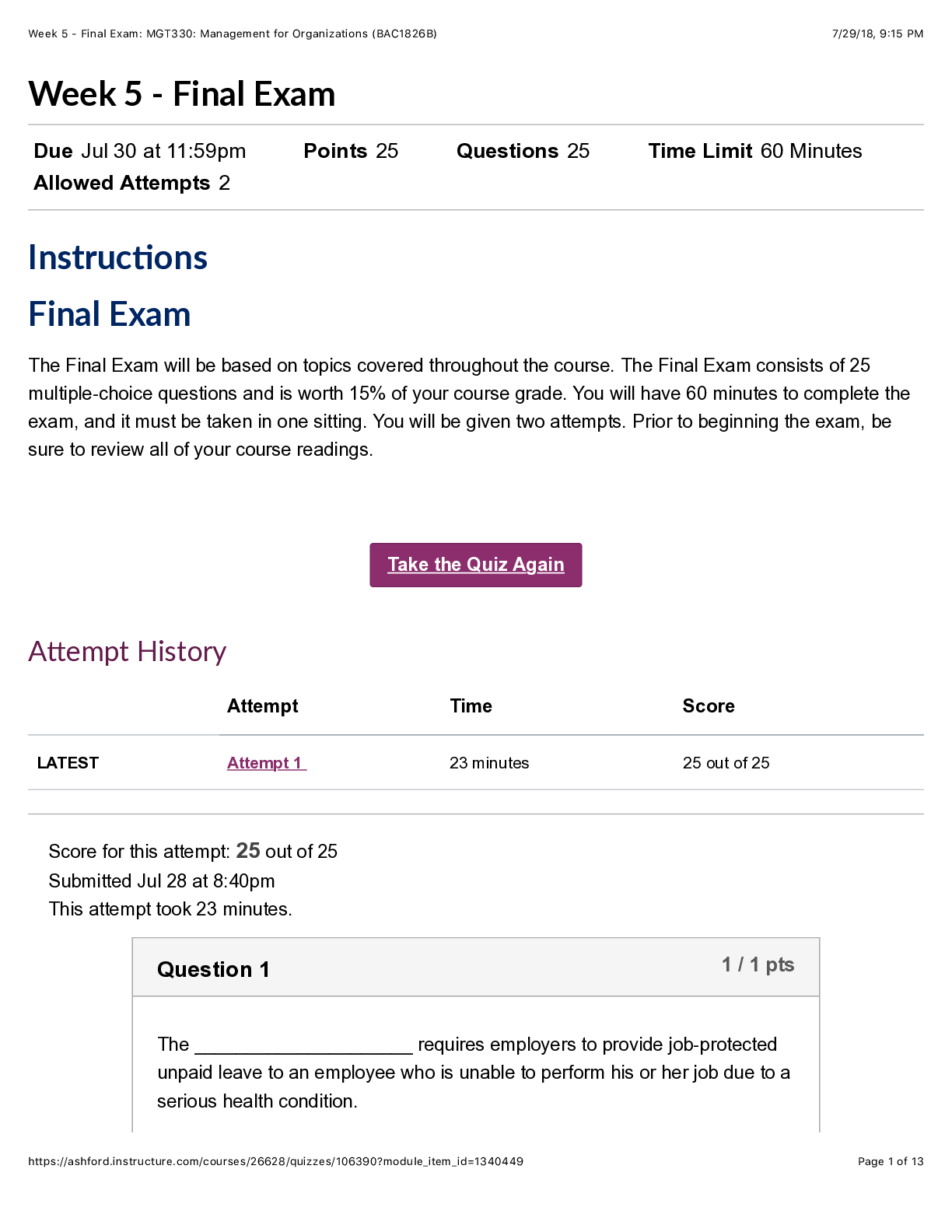
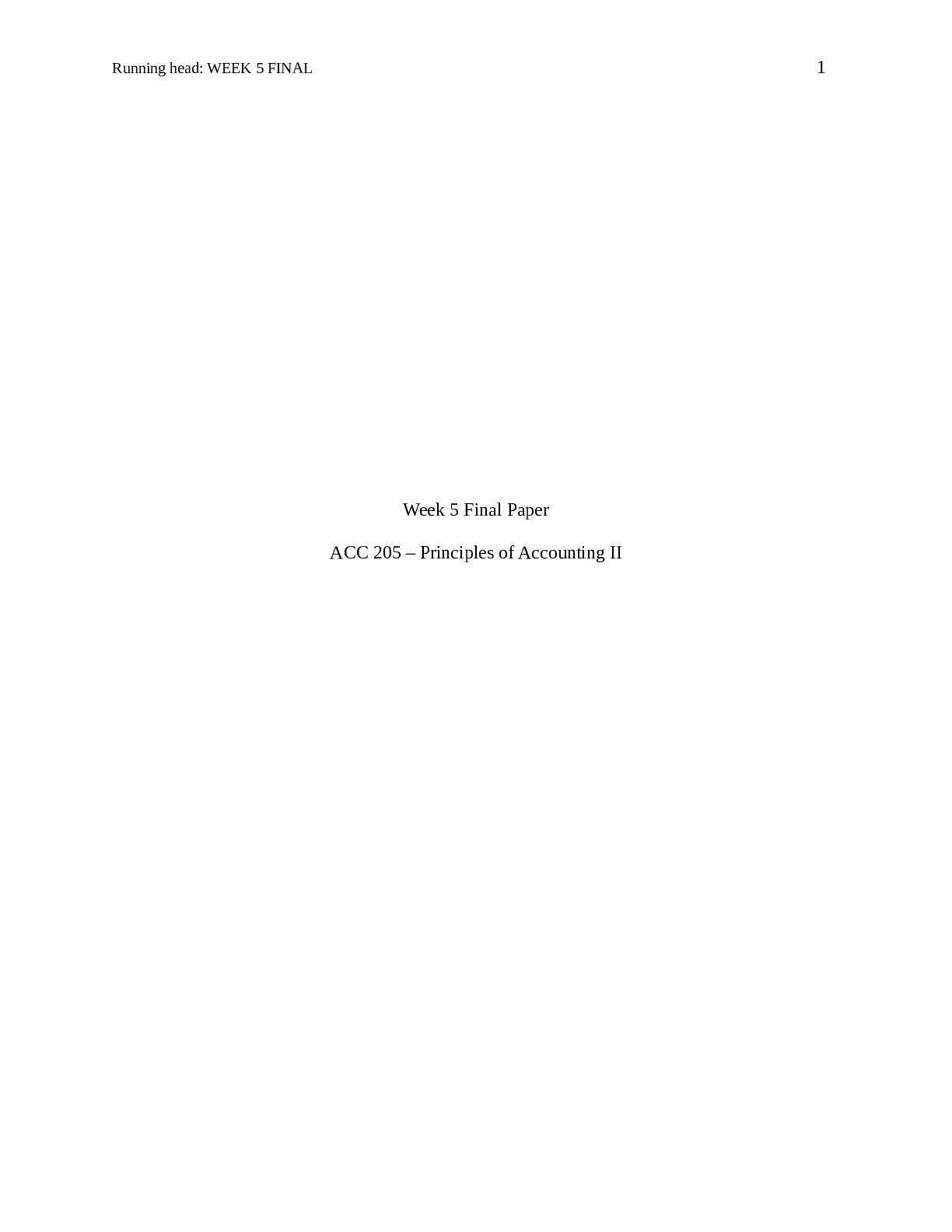
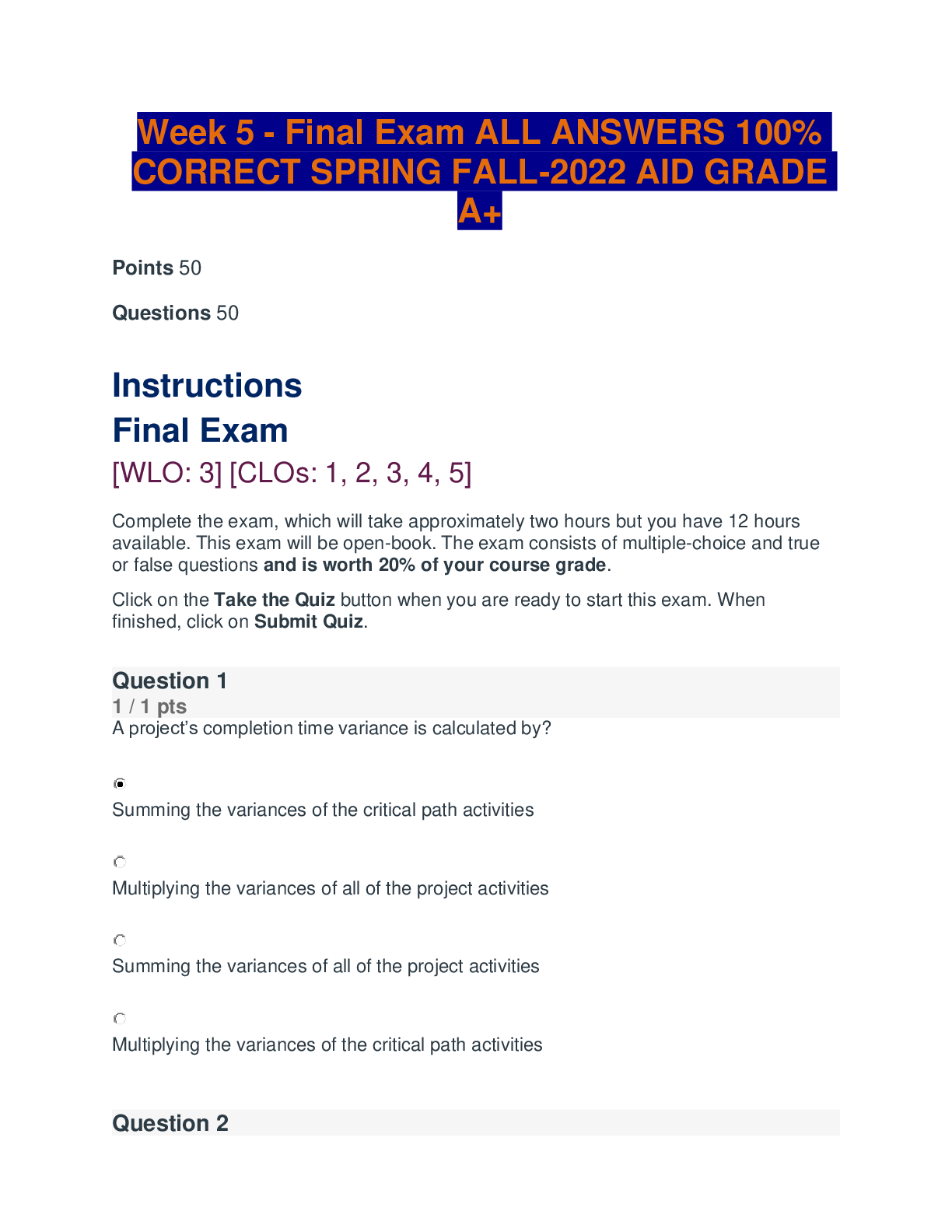
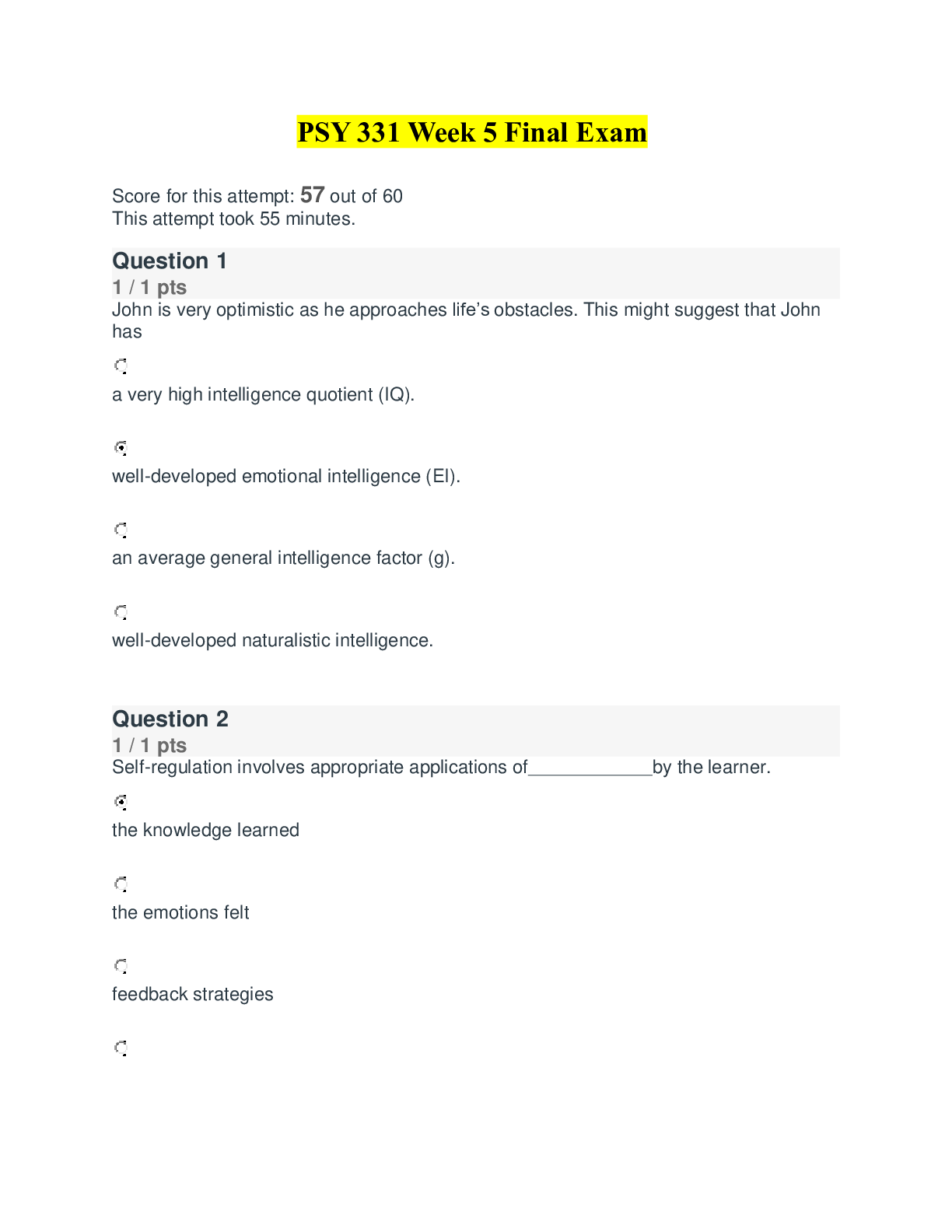
.png)
